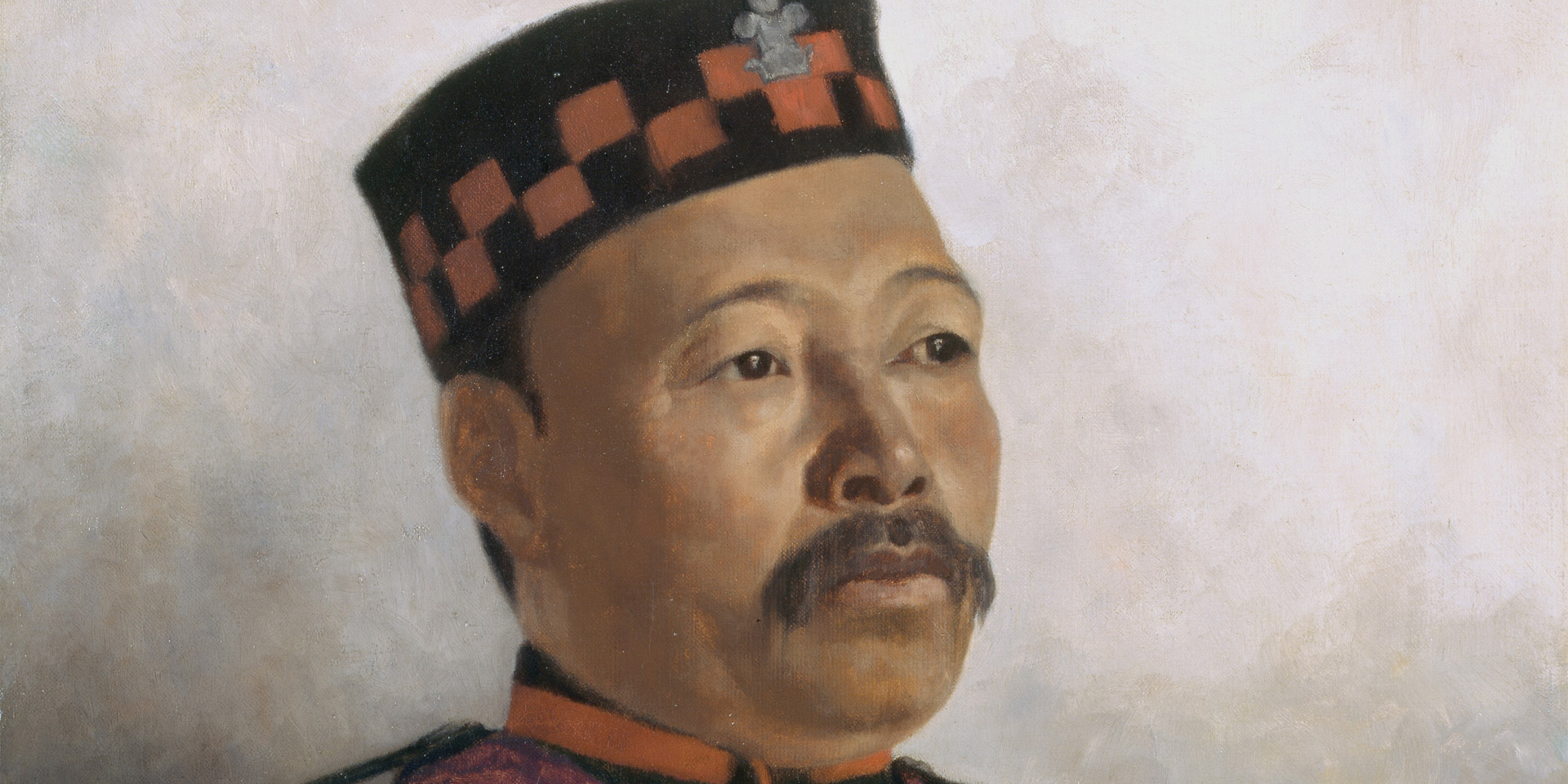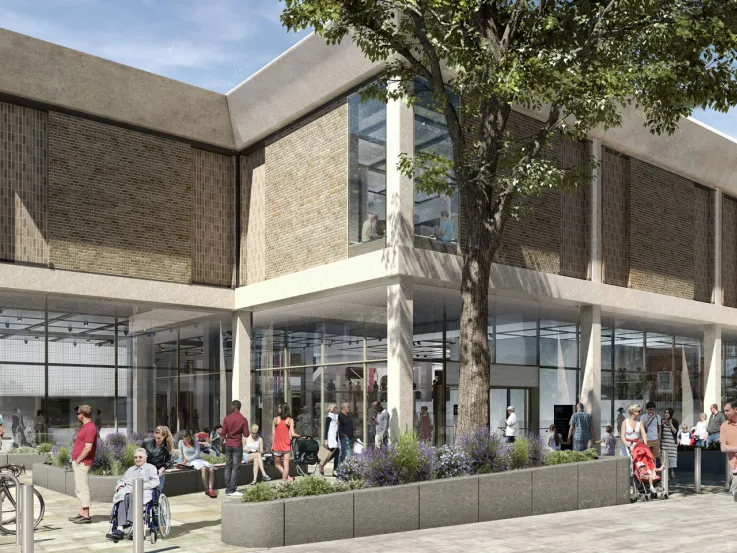Memorial to British Indian Army unveiled at Royal Military Academy Sandhurst
The National Army Museum has reinvigorated the historic Indian Army Memorial Room at the Royal Military Academy Sandhurst with unseen items from its collection. The refreshed dedication displays over 100 objects from the National Army Museum's collection, some of which were shown in this room for the first time in Britain nearly 70 years ago.
The room was unveiled on Friday 6 September 2019 by Field Marshal Sir John Chapple in the presence of distinguished guests and members of the diplomatic community from the UK, India, Pakistan and Sri Lanka.
Since its inception in 1950, the Indian Army Memorial Room (IAMR) has been a focal point for cadets at the Royal Military Academy Sandhurst, upon both arrival and commission. The significance of the shared history between Great Britain and South Asia remains of great importance to their training, as well as their understanding of the role of the British Army today.
The Commandant, Major General Paul Nanson CBE said:
'A major part of developing the future leaders of the British Army involves looking to the powerful lessons of our forebears. The inspiration to cadets of all nations provided by the leadership, courage and spirit of the great regiments of the British Indian Army is as strong today as ever. This room serves as a fitting memorial to over 200 years of service and sacrifice.'
New display
The objects and paintings installed in this new commemorative display of the British Indian Army are some of the best examples of craftsmanship from the 18th, 19th and 20th centuries. Brigadier (Ret'd) Justin Maciejewski DSO MBE, Director at the National Army Museum (NAM) said:
'We are delighted to be able to display more of our collection in this historic setting, especially objects of such beauty and significance in terms of the shared heritage between Britain and the nations of South Asia. These objects and the inspiring stories that they represent show the extraordinary diversity of the British Indian Army.'
The most imposing additions to the room are the series of 57 portraits and scenes which hang above new display cases filled with ceramics, silverware and regimental badges. Four pieces of stained glass have been conserved from the NAM collection and installed, along with over 40 shields of the Commanders-in-Chief in India, memorial plaques, busts and swords.
Highlights selected by NAM curator Pip Dodd include: a captivating portrait of a Pathan sowar of the 25th Cavalry (Frontier Force) by Leila Williamson, the wife of the Commanding Officer of the Regiment (NAM. 1959-02-24); James Sant's academic portrait of Colin Mackenzie in his Afghan costume (NAM. 1961-10-61); vivid Victorian stained glass depicting the coats of arms of the East India Company and Addiscombe College (NAM. 1974-03-165-1 and -2); Rissaldar Mohubut Khan, OBI bahadur, 2nd Scinde Irregular Horse (NAM. 1981-12-3-1).
The UK's Defence Adviser in India who attended the event, Brigadier Gavin Thompson, said of the room's significance:
'The Indian Army Memorial Room reflects the important shared history and links between our modern-day armies. This refurbishment is an entirely appropriate demonstration of the close historic, present and future partnership between our nations.'
History of the room and collection
The Indian Army Memorial Room was initially dedicated as a museum in 1950 to preserve the history of the British Indian Army. After the Indian Independence Act was passed and the British Indian Army disbanded in 1947, there was a call to preserve its heritage.
Supported by the last Commander-in-Chief in India, Field Marshal Sir Claude Auchinleck, as well as General Sir John Coleridge and Field Marshal Lord Birdwood, appeals were made for donations with the aim of setting up a museum.
Generous support was received from the new armies of India and Pakistan, and in 1950 this room was officially dedicated as the Indian Army Memorial Room to house the new collection. A selection of objects and paintings from this collection later formed the foundation for the National Army Museum.
Established by Royal Charter in April 1960, the National Army Museum sits on the original site of the infirmary of the Royal Hospital Chelsea, the home of the Chelsea Pensioners. Since that time, its collection of objects and artefacts pertaining to this period of the British Army has continued to grow.
Most recently, in 2013, the Museum acquired a collection of badges and insignia numbering more than 8,000 pieces. They were donated by Field Marshal Sir John Chapple, who remains a dedicated advisor and patron.
Notes to editors
- Royal Military Academy Sandhurst is accessible to members of the public on Heritage Day and throughout the year via bookings through the Sandhurst Trust - www.sandhursttrust.org
- The National Army Museum is open: 10am - 5.30pm (Monday - Sunday); 10am - 8pm (first Wednesday of every month); closed Christmas Eve, Christmas Day and New Year's Day
- General admittance to the Museum is free
Join in the conversation:
- Twitter and Instragram: @NAM_London @BritishArmy
- Facebook: facebook.com/NationalArmyMuseum
For more information please contact:
- Lise Simpson | Head of Protocol
- Royal Military Academy Sandhurst
- E: lise.simpson883@mod.gov.uk | T: 01276 412 536
- Claire Blackshaw | PR & Communications Manager
- National Army Museum, London
- E: press@nam.ac.uk | T: 020 7881 2433
About Royal Military Academy Sandhurst
The Royal Military Academy Sandhurst (RMAS) is where all officers in the British Army are trained to take on the responsibility of leading their soldiers. During training all officer cadets learn to live by the Academy’s motto of ‘Serve to Lead’. Other nations choose to send their personnel to RMAS for Officer training because it is recognised as a world-leading military training academy.
www.army.mod.uk/who-we-are/our-schools-and-colleges/rma-sandhurst/
About the National Army Museum
The National Army Museum is the leading authority on the history of the British Army. It was founded in 1960 by Royal Charter and established for the purpose of collecting, preserving and exhibiting objects and records relating to the Land Forces of the British Crown. The Museum seeks to tell the story of the nation’s Army and of the soldiers who have served in it. It aims to inspire, educate and engage the public with its world-class collection.


